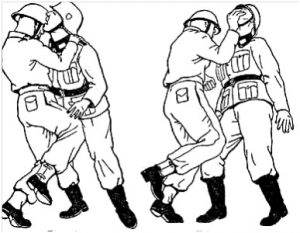The other day I had someone ask what it is that we do at The Academy of European Swordsmanship. He had found us through our website. Now, my immediate thoughts were that either he didn’t really have a look at the website, or it’s somehow lacking in this regard. Maybe the information is too hard to find? Is it buried in our pages and people are no longer into looking at the About information? Or should it be explicitly in a blog post?
This is the very first sentence on our website, and has been for at least a couple of years: “At the Academy we practice the full range of western martial arts from swords to polearms to dagger and  hand-to-hand fighting (with a special love of the sword!). ” The wording of this whole paragraph probably hasn’t changed much since the 1990’s, when we got our very first website. We love our swords, whether longsword, arming sword, Messer, sidesword, or whatever… Swords are fun!
hand-to-hand fighting (with a special love of the sword!). ” The wording of this whole paragraph probably hasn’t changed much since the 1990’s, when we got our very first website. We love our swords, whether longsword, arming sword, Messer, sidesword, or whatever… Swords are fun!
So, what is Western Martial Arts (WMA)?
Simply put, it’s martial arts from the Western (European) tradition. Martial Arts is a special term that means, quite literally, “the arts of Mars” (the Roman god of war). Nowadays we tend to think of this as the individual fighting arts, where a person learns the art of fighting against one other person, whether unarmed (empty-handed) or with some kind of hand-to-hand weapon (not a ranged weapon, such as a bow or gun). This means that we learn to fight using weapons that were used by professional warriors as well as by civilians in Europe from as early as 1320ish (I.33 manual) to the modern age.
Now, that’s pretty encompassing, and includes Historical European Martial Arts (HEMA), another term that has recently become popular for the martial arts of European origin. WMA includes HEMA. There are some who might argue this, but they are just being picky, because they don’t want what they practice (HEMA) to be included into a larger umbrella term. Whatever. Live with it.
HEMA is largely (completely?) reconstructed from treatises that were written hundreds of years ago. And we’re okay with that. Through decades of experience and multiple people’s interpretations, we are learning a lot about the swordsmanship of the different European cultures. Some prefer Italian, some German, and some English or some other people’s art. At the AES we concentrate on the German and English arts. Why? It’s the heritage of those of us who founded it, and there’s just far too much to include the Spanish, Italian, etc. The German and English arts have enough to last a lifetime of learning. We don’t really need more. And as far as HEMA and competition goes, there’s plenty to keep us on top of our game and make it very competitive!
As for self defence, there is also plenty there, both in the historical (HEMA) aspect and the more modern aspect, which includes such previous people as Fairbairn (1943). We integrate both the historical techniques and the more modern ones we learn, as long as they’re Western in origin, into our learning. While this might mean that we don’t have a purely German or English style, overall, it is still effective. And it is still Western. What do we do? We learn the history of WMA and we learn to use it. Simple as that!